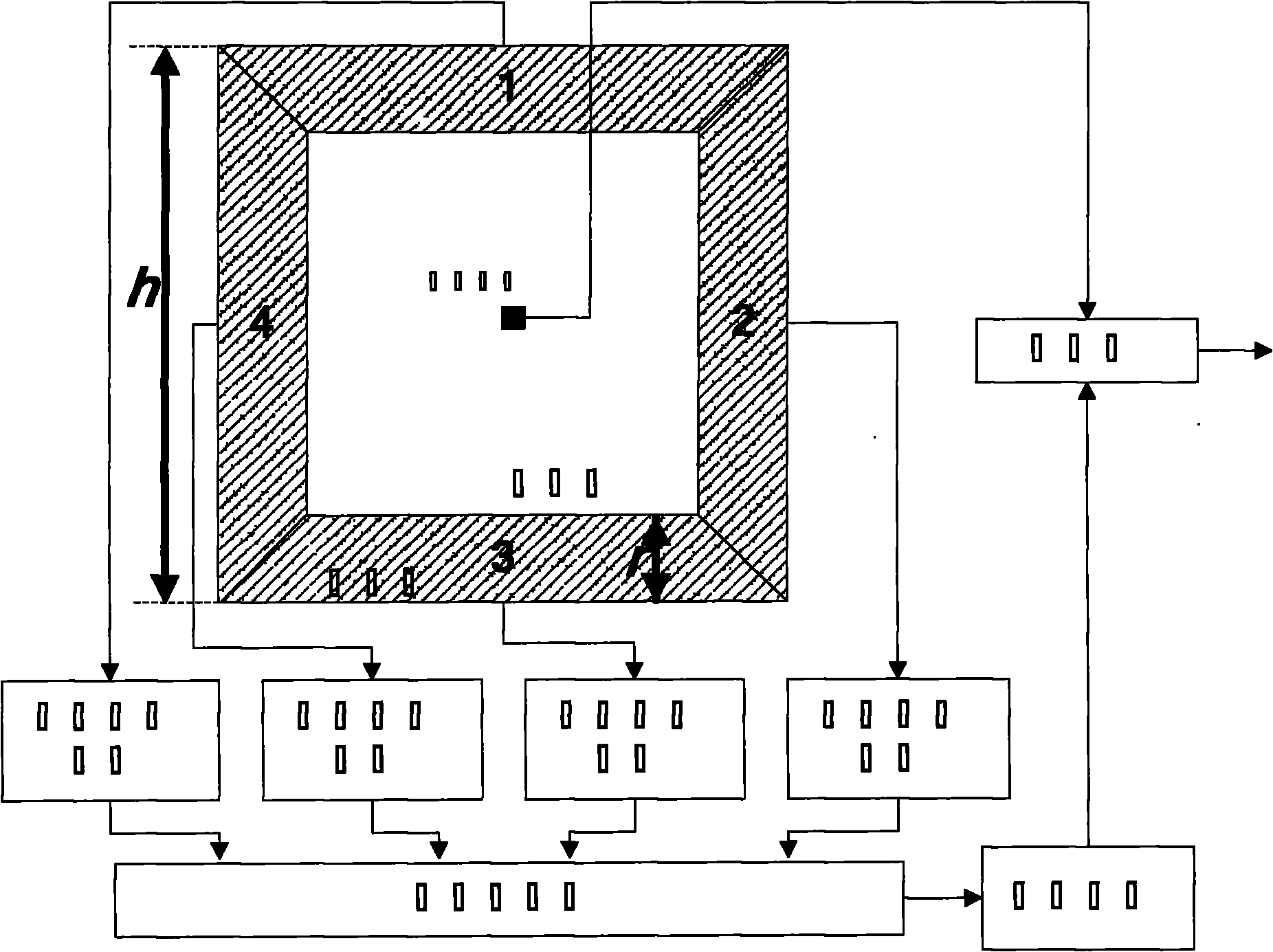Segmentation combination-based adaptive constant false alarm rate target detection method for SAR image
A technology of constant false alarm rate and target detection, which is applied in image analysis, image data processing, measurement devices, etc., can solve the problems of loss of target detection rate and imperfect combination of windows and other problems, and achieves a small amount of calculation and improved detection effect. , the effect of simple operation
- Summary
- Abstract
- Description
- Claims
- Application Information
AI Technical Summary
Problems solved by technology
Method used
Image
Examples
Embodiment Construction
[0058] The present invention will be described in detail below in conjunction with the accompanying drawings, and the technical problems and beneficial effects solved by the technical solution of the present invention are also described. play any limiting role.
[0059] figure 1 It is a schematic diagram of the hollow reference unit window and four sub-windows of the SAR image adaptive constant false alarm rate target detection method based on segmentation and combination in the present invention. First, a reference window of an appropriate size needs to be selected to detect each pixel to be detected . This detection reference window consists of two windows, one is the background window and the other is the protection window. This hollow reference window is obtained by subtracting the protection window from the background window. The hollow reference window should be divided into four small sub-windows as shown in the figure, which respectively represent the environmental ...
PUM
 Login to View More
Login to View More Abstract
Description
Claims
Application Information
 Login to View More
Login to View More - R&D
- Intellectual Property
- Life Sciences
- Materials
- Tech Scout
- Unparalleled Data Quality
- Higher Quality Content
- 60% Fewer Hallucinations
Browse by: Latest US Patents, China's latest patents, Technical Efficacy Thesaurus, Application Domain, Technology Topic, Popular Technical Reports.
© 2025 PatSnap. All rights reserved.Legal|Privacy policy|Modern Slavery Act Transparency Statement|Sitemap|About US| Contact US: help@patsnap.com



